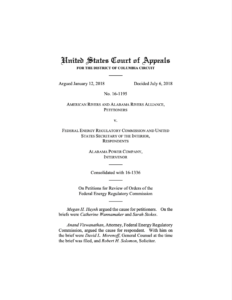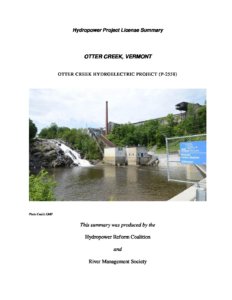Newsom “Strategy” Condemns Central Valley Salmon to “Hotter, Drier Future”
The “California Salmon Strategy” announced January 30, 2024 by the Newsom Administration is a tour de force of avoidance and deflection. It blows right past the single largest issue facing California’s salmon: inadequate flows into and through the Bay-Delta Estuary.
The Newsom administration has been, and continues to be, on the wrong side of Delta flow. The new Strategy document does not cure that unacceptable position. On the contrary, it ducks it.
The Newsom administration is the ringleader of the “Voluntary Agreements” that would increase Delta inflow and outflow by an average of about 5%. A flow increase of 5% is far, far short of what the State Water Board is proposing for the update of the Bay-Delta Plan and what its science says Central Valley salmon need. If it were dollars, 5% wouldn’t even pay the sales tax.
Worse, the Newsom administration is a vocal supporter of two huge water development projects in the Central Valley: the proposed tunnel under the Delta (branded “Delta Conveyance”), and Sites Reservoir. Those two projects alone would take more water out of the Delta than the Voluntary Agreements would put in.
The net result of marginal increases in Central Valley flow – or net loss of flow with the tunnel and Sites – means that salmon in Central Valley rivers and the Delta will face conditions that are drier and hotter than today. And today’s conditions for salmon are so bad that salmon fishing was closed in 2023 and is almost certain to be closed in 2024.
If the Newsom administration:
• Directs the State Water Board to update the Bay-Delta Plan without the woeful Voluntary Agreements;
• Abandons the tunnel and opposes Sites; and
• Adds definition and specificity to a lot of the vague promises in its Strategy document;
then it would have a pretty decent salmon strategy.
Digging Deeper into Newsom’s Plan
The positive elements in the Strategy don’t offset the issues avoided. The positive elements primarily deflect attention from the Newsom Administration’s fundamental shortcomings on salmon management.
In addition, many of the potentially positive elements are vague, programmatic, qualified with wiggle words like “depending on available resources,” and/or aspirational.
Still, what’s in the Strategy warrants analysis and improvement.
Fish Passage and Dam Removal
The Strategy calls for removing two dams on the Eel River. The clear support is new and is particularly welcome. Scott Dam and Cape Horn Dam need to go. Quickly. State support is not likely to define the outcome, but may accelerate and help finance it.
The Strategy calls for completing already-underway dam removal projects on the Klamath River, Matilja Creek, and Malibu Creek. The State had a big role in Klamath dams getting out, and deserves a huge amount of credit. State support may hasten completion of the other removal projects.
The Yuba fish passage plans are a mixed bag.
Salmon reintroduction to the upper Yuba River needs to happen, and has been under study and in planning for three decades. But the current funding plan for a pilot reintroduction of salmon upstream of major Yuba River dams had a separate cost to salmon: State support for status quo flows in the lower Yuba River. Trading habitat for flow, a frequent theme of the Newsom administration, is not acceptable.
In addition, the planned fishway at Daguerre Point Dam in the lower Yuba River would, for the first time, allow striped bass, which eat juvenile salmon, direct access to areas in the lower Yuba where most salmon now spawn and grow. The fishway design needs to be fixed so that doesn’t happen.
The Strategy proposes “fish passage” on Battle Creek dams. PG&E is planning to abandon the use of those dams, though, true to form, PG&E is slow-rolling the process. The Battle Creek dams accessible to salmon under natural conditions don’t need fish passage. Those Battle Creek dams need removal, and the sooner the better.
There are several proposed fish passage improvements on the lower Feather River. They are good. They should have happened a long time ago.
There is a support for further development of a pilot trap-and-haul reintroduction of salmon to the upper North Fork Feather River, and for parallel improvements at the Feather River Fish Hatchery to support that project. Great idea. We support. This took almost 20 years to start while PG&E and the State Water Contractors slow-rolled the Oroville Habitat Expansion Plan.
The Strategy proposes further evaluation of salmon reintroduction above dams. The Tuolumne is a leading candidate, and most of the initial evaluation is already done. The Governor needs to twist some arms in San Francisco to get a Tuolumne reintroduction program started.
There are programmatic measures, for the most part all good, though many are too vague or uncertain to truly evaluate.
Habitat Restoration and Expansion
The Strategy proposes to plan many projects to restore and expand habitat. They are generally good things. They are not a substitute for adequate flow.
Flow “in Key Rivers at the Right Times”
Recall that the primary purpose of the Strategy is avoidance and deflection of Delta flow issues, the Delta tunnel, and Sites Reservoir.
The phrase “at the right times” is a code word for “using as little water as possible.” “In key rivers” means “as little water in the Delta as possible.”
The Strategy does discuss the update of the Bay-Delta Plan. It is worth quoting Section 3.4 exactly, because the deception is subtle:
By 2025, adopt an updated Bay-Delta Water Quality Control Plan, which could include potential Voluntary Agreements to Support Healthy Rivers and Landscapes, to protect beneficial uses including the protection of salmon, steelhead, and other native aquatic species.
Not only “could” an updated Bay-Delta Plan include Voluntary Agreements, those agreements will be the Plan if the Newsom administration has anything to say about it. The administration sent the Secretary of the Natural Resources Agency to lobby the State Water Board hard on the Voluntary Agreements on December 11, 2023. Every indication is that if the Board does not accept the Voluntary Agreements, the administration will revert from a position urging haste to its previous position of promoting indefinite delay.
For geographic areas where there is less formidable pushback, the Strategy is more aggressive. It promotes flows requirements on the Scott and Shasta rivers, though with happy buzzwords that speak long on process and short on results (“local partners on locally driven solutions and coordinating on options for incentivizing the reduction of diversions and groundwater pumping.”)
In 2024, the Strategy will “begin review” of flows on Antelope, Mill, and Deer creeks.
In 2025, the Strategy promises to “continue advancing collaborative work with stakeholder groups to implement flow solutions in Butte Creek.” Well, the collaborative work on Butte Creek hasn’t gone far. CSPA knows: we’ve been there for 18 years. And what is needed is not “flow solutions.” What’s needed is reliable delivery of water from the West Branch Feather River to Butte Creek. If the State really wants to help, it should take over PG&E’s dog-eared DeSabla hydroelectric project and bypass its leaky old Hendricks Canal with a tunnel.
There are other long-deferred projects to set instream flows on priority streams, “depending on available resources.” They’re all good things to do, if they happen.
Hatchery Upgrades
They’re all good; CSPA supports. Hatcheries are a stopgap, but as long as they’re needed, they ought to be managed to produce fish efficiently, reliably, and abundantly. Survival of hatchery smolts trucked to the Bay or ocean is up to two orders of magnitude greater than smolts released from hatcheries into rivers in dry years. Filtration for hatcheries is needed across the board, especially, but not only, to enable reintroduction of salmon upstream of hatcheries.
The Merced River needs a new salmon hatchery upstream of Lake McSwain. The Merced also needs a conservation hatchery for native trout from remnant populations in and around Yosemite, and perhaps for spring-run salmon for reintroduction to the Tuolumne.
Improving Technology and Management
It’s hard to argue with improving technology. However, old marking technology did allow the potential for marking all hatchery fish to create a “mark-selective” salmon fishery that would allow harvest of hatchery fish only in years following small runs of spawning salmon. Given recent events, this is worth another look.
As far as management goes, most of the previous efforts at management committees for salmon oversight have not gone well. They have been dominated by politics and economics. The single greatest prospective management improvement for salmon is better management of water to assure salmon of adequate flows and cold water.
Partnerships
The administration’s recent emphasis on partnership with Tribes is all to the good. Perhaps soon that will extend to the repeatedly expressed concerns of many Central Valley Tribes, who have argued that lack of flow and poor water quality impedes Tribal beneficial uses.
On another front, the Strategy says: “While regulatory tools help establish standards, they have limitations . . .” From our perspective, the limitations are primarily that the State’s regulators pass weak standards according to what their “partners” in the regulated water community decide they can live with. Then the regulators substitute “partnership” and “collaboration” for enforcement.
The culture of anti-regulation becomes acute after the over-delivery of water in a first dry year, followed by the Governor’s “emergency” weakening of standards in dry years that follow. Salmon have gotten hammered in droughts in the last decade. Any serious response to protecting salmon under climate change involves knocking off the “temporary” change gambits that weaken protections in every dry year.
As for environmental and fishing non-governmental organizations, the administration’s price for “partnership” in the Central Valley has been acceptance of the unacceptable: Voluntary Agreements, Delta tunnel, Sites Reservoir. And “emergency” drought proclamations.
Conclusion
The treatment of Central Valley and Delta flow in the Newsom Administration’s new Salmon Strategy is reminiscent of the lines from Harry Belafonte:
She brought me a little coffee
She brought me a little tea
Well, she brought me nearly every damned thing
But she didn’t bring the jailhouse key
The key to the Governor’s escape from the confinement of bad salmon management is addressing the big, hard issues. The same thing that’s wrong with the Governor’s Salmon Strategy is what was wrong with the Governor’s Water strategy (“California’s Water Supply Strategy: Adapting to a Hotter, Drier Future,” August 2022): the State needs to confront its overallocation of water.
The State needs to devote enough water, through flow and storage, to salmon and other elements of the Bay-Delta watershed’s ecosystem. That begins with adoption of a high-flow Bay-Delta Plan and reductions in agricultural water use, both structurally and in response to short-term hydrology.
The Governor’s supply-side approach to water supply, most acutely embodied in his support of the proposed Delta tunnel and Sites Reservoir, is backwards. As long as Central Valley salmon are relegated to the leftovers of an ever-shrinking natural supply of water, they will never recover.
Originally posted on calsport.org.


